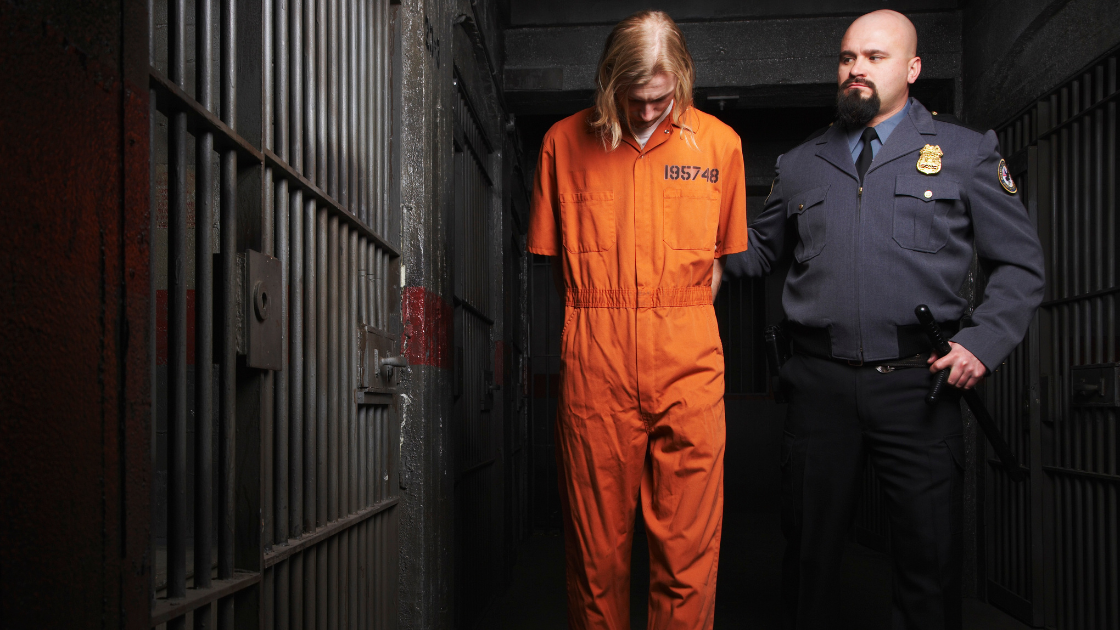
5 Inspirational African American Leos you should know
February 24, 2023
,
Hear from the Experts
February 24, 2023 Community
In 1867, the first African-American police officers were appointed to the police department in Selma, Alabama. They would be followed in 1868 by officers in Jackson, Florida, and in 1870 by officers in Houston and Galveston, Texas. Today, approximately 58,000 African American Officers work in US Police Agencies. To celebrate the triumphs of African American leaders in Law Enforcement, this Black History Month, we’re shedding light on 5 inspirational stories you should reflect on this and every Black History Month.
1. Samuel J. Battle-The First African American Police Officer

Growing up in the Reconstruction-Era South, Battle attended segregated schools in his hometown of New Bern, North Carolina. It was in his hometown as a teenager that he would be inspired to seek a career in law enforcement after a teenage fall from grace involving theft. After this incident, he felt motivated to become the opposite of a criminal—a police officer.
As a young adult, Battle moved north, first to Connecticut and then New York City in 1901. Years later with a growing family to support, Battle sought the advice of his brother-in-law, Officer Moses Cobb. He became his mentor, and encouraged Battle to try for a position with the NYPD. Battle did so and placed 119th out of 638 applicants to the New York City Police Department. On June 28, 1911, at the age of 28, Samuel J. Battle was the first African American Officer officially hired by the NYPD. Although the City of Brooklyn had hired Cobb and other African American police officers prior to Battle’s appointment, Samuel Battle became the first African American to be appointed after the police forces merged in 1898. He pushed for equality in all of the city’s civil services, including mentoring Wesley Williams, the first Black firefighter in the New York Fire Department. Battle later became the first black sergeant in 1926, the first black lieutenant in 1935, and the first black parole commissioner in 1941.
Despite his success as an officer, Lieutenant Battle faced a great deal of racism and bigotry from both white citizens and officers. However, Battle often found that while he faced great adversity, there were a great number of his peers who held him in high regard—including many of his fellow officers and public officials. In 2009, the corner of West 135th Street and Lenox Avenue in New York was renamed Samuel J. Battle Plaza in honor of his achievements. That street corner marked the location where Battle saved a white officer’s life during a racial skirmish in 1919.
2. Bass Reeves-The First Black Deputy Marshal

Growing up in Arkansas, Reeves spent his early life as a contented farmer but that abruptly changed when the Federal Western District Court was moved to Fort Smith, Arkansas, and Isaac C. Parker was appointed on May 10, 1875. At that time, the Indian Territory in the area had become exceptionally lawless as thieves, murderers, and anyone wishing to hide from the law took refuge in the territory that previously had no federal or state jurisdiction. One of Parker’s first official acts was to appoint U.S. Marshal James F. Fagan as head of some 200 deputies he was then told to hire. Fagan heard of Bass Reeves’ significant knowledge of the area and soon recruited him as the First Black U.S. Deputy Marshal west of the Mississippi River.
The deputies were tasked with “cleaning up” Indian Territory and, on Judge Parker’s orders, “Bring them in alive — or dead!” It is said he was never wounded despite having his hat and belt shot off on separate occasions. He was a marksman with a rifle and revolver and had superior detective skills during his long career. An imposing figure, always riding on a large white stallion, a large hat and polished boots. He was also known for his politeness and courteous manner. However, when the purpose served him, he was a master of disguises and often utilized aliases. With this description it is easy to see why his story as “The Real Lone Ranger” has inspired countless others.
At his retirement in 1907, Reeves had on his record over 3,000 arrests of felons.Though the tales of Reeves’ heroics are many and varied, the toughest manhunt for the lawman was hunting down and even arresting his own son for murder. His story has inspired countless films, art and historic landmarks scattered throughout the USA.
3. Georgia Ann Robinson-The First African American Police Woman

Robinson has a strong desire to serve.This led her to get involved with various community organizations, and it was through her work with these groups that she was approached and convinced by an LAPD recruiter to join the force.In 1916, when the Los Angeles Police Department (LAPD) was facing a shortage of officers after many enlisted to fight in World War I, Robinson was recruited to leave her community work to join LAPD as a volunteer jail matron. In 1919 she was appointed as an officer working mostly on juvenile and homicide cases, as well as cases with black women.
She often referred the people she came in contact with to social agencies. She discovered in the course of her work that there was a great need for a women’s shelter, and helped found the Sojourner Truth Home for those with nowhere else to go. Her police career ended abruptly when she permanently lost her sight after being injured by a prisoner in 1928.
Pensioned off on disability, she began working with local community leaders to desegregate Los Angeles beaches and schools and continued her work with women in the shelter. Robinson devoted the rest of her life to serving the residents of Los Angeles by fighting against segregation and for women’s welfare. Georgia was quoted in the September 1954 issue of Ebony magazine saying – “I have no regrets. I didn’t need my eyes any longer. I had seen all there was to see.”
4. Homer L. Garrott-The First African American California Highway Patrol (CHP) officer

Garrott was born in Los Angeles, California in 1915. After completing his service in the U.S. Army, Garrott took the civil service test for the CHP in 1942. He passed the exam and became its first black patrolman. Shortly after Garrott was hired, a small group of East Los Angeles community members, led by a local newspaper, petitioned the CHP for Garrott’s removal from the force. Despite their efforts, the CHP stood its ground and did not fire him.
He served for 22 years with the department. In 1954 after nearly twelve years on the force, he attended law school while serving the force. In 1954 after nearly twelve years on the force, Garrot began attending Southwestern University School of Law at night. He graduated from law school in 1957 and in 1960 he passed the California state bar exam. Garrott soon left his position with the CHP and began working in the Los Angeles County juvenile court system. He was a deputy public defender from 1964 to 1967, court referee from 1967 to 1968, and a traffic commissioner from 1968 to 1973. In 1973 Governor Ronald Reagan appointed Garrott as a judge for Compton.
The Southwestern University School of Law, where Homer L. Garrott received his degree, established a scholarship in his name. The scholarship allotts funds for deserving students in need of financial assistance. Homer L. Garrott has been honored by several organizations for his impact on the community.
5. Hubert Williams- The First Black Police Chief and Founding President of NOBLE.

Hubert Williams began his over 30 year law enforcement career at the Newark, New Jersey Police Department. He was sworn in as their Police Chief in 1974. In addition to being one of the youngest Police Chiefs ever in the US at the time, he also became the first Black Police Chief of a major city in the US. He directed the Newark force from 1974-1985 during a time in which inner-city deterioration, civil unrest, and drug-related crime plagued most of the nation’s urban areas.
During this time, Willams also helped found and lead the National Organization of Black Law Enforcement Executives (NOBLE) in 1976 with the mission to ensure equity in the administration of justice. He retired from his role as Director for the force in 1985 but continued his selfless commitment to service as he headed the National Police Foundation (formerly Police Foundation) for 27 years, from 1985 to 2012, becoming the longest-serving president in the organization’s 50-year history.
During his decades-long career, Williams embedded the philosophies of community-oriented policing into his departments and all those he mentored. His leadership was instrumental in advancing police departments in New York, New Jersey and California. The scope of Hubert’s experience and influence on police policy is considerable and his impact continues to resonate within the Law Enforcement Community.
Hubert recently passed away in March of 2020 but his spirit of resilience and dedication to the service of others and the betterment of communities nationwide continues to inspire us all.
Sources
- https://www.blackpast.org/african-american-history/battle-samuel-james-1883-1966/
- https://www.blackpast.org/african-american-history/robinson-georgia-ann-hill-1879-1961/
- https://cops.usdoj.gov/html/dispatch/02-2017/african_americans_in_law_enforcement.html
- https://www.police1.com/national-law-enforcement-museum/articles/book-details-the-life-of-samuel-battle-the-first-black-police-officer-in-nyc-LvJuB2PJTW06jUUx/
- https://www.facs.org/about-acs/archives/past-highlights/wrighthighlight/
- https://nleomf.org/lieutenant-samuel-j-battle/
- https://www.legendsofamerica.com/we-bassreeves/
- https://cebcp.org/hall-of-fame/hubert-williams/
- https://www.independent.org/aboutus/person_detail.asp?id=2718
- https://www.globenewswire.com/en/news-release/2020/03/17/2001980/0/en/The-National-Organization-of-Black-Law-Enforcement-Executives-NOBLE-Mourns-the-Loss-of-Founding-Member-Hubert-Williams.html
- https://www.tampabay.com/archive/1997/06/12/black-chiefs-face-unique-challenge/
Recent Blog Posts

Body Camera Trends for 2025: Enhancing First Responder Safety & Community Trust
January 23, 2025
Discover how EOS by Utility™ transforms campus safety with advanced features like automatic activation, real-time streaming, and secure evidence management, empowering officers to respond effectively, enhance accountability, and build trust within their communities.


